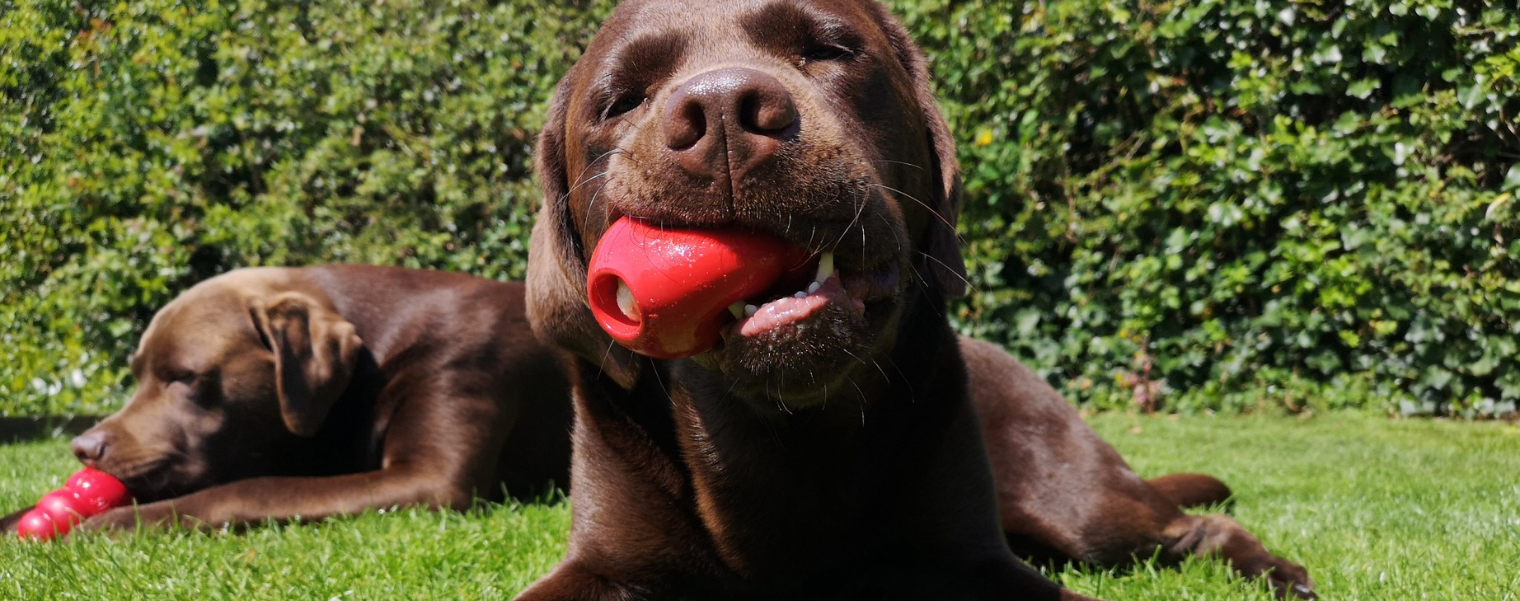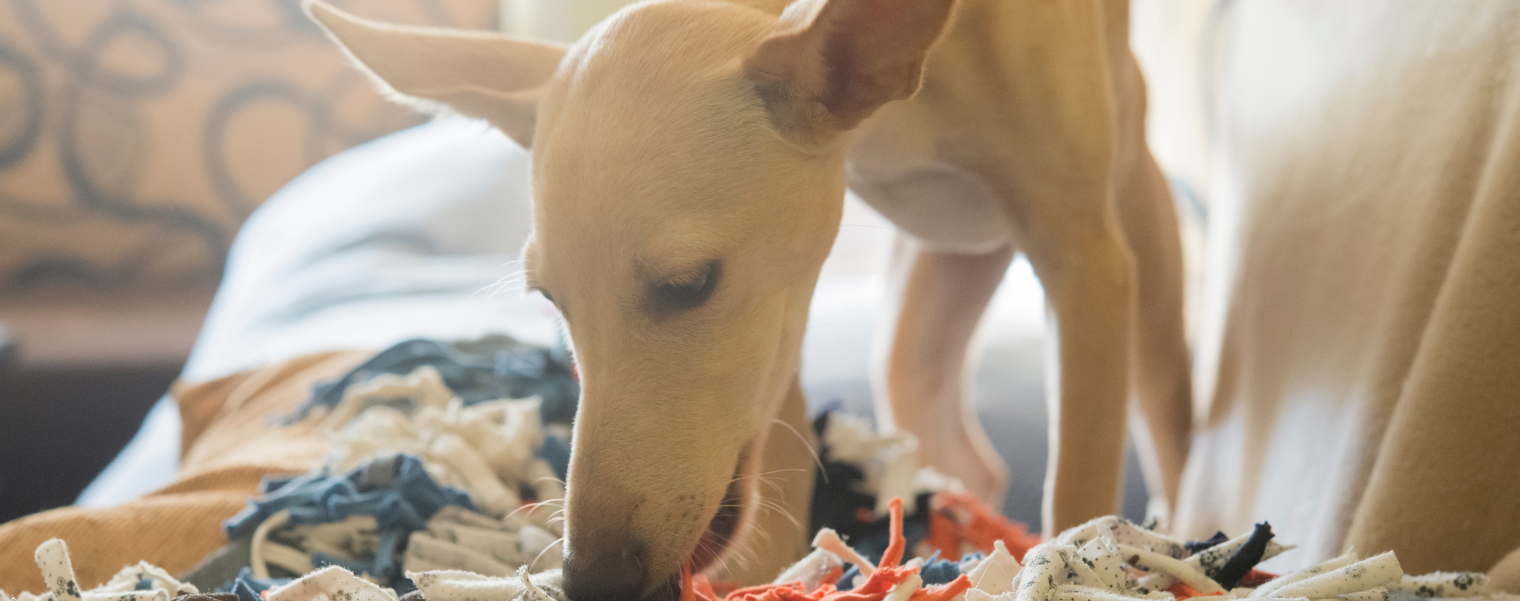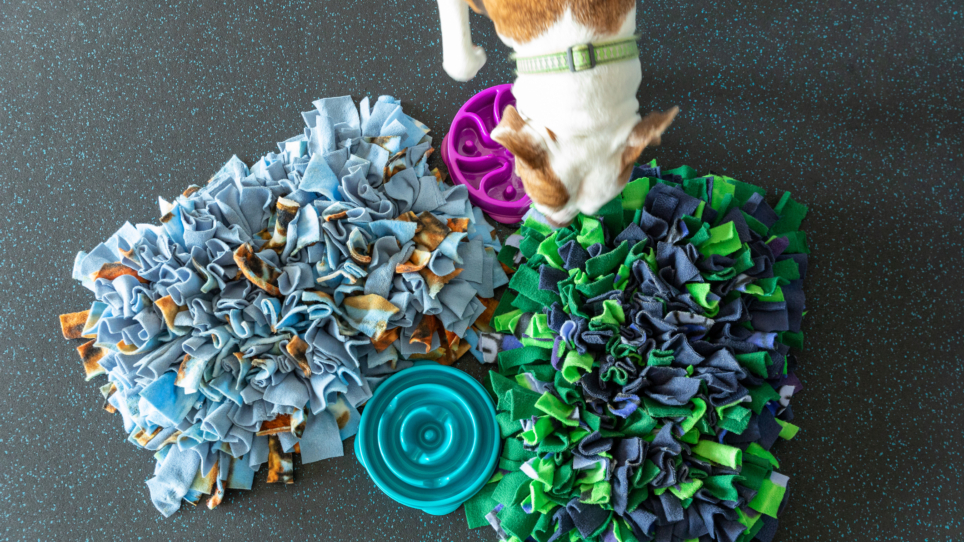Providing enrichment for your pet is essential for their wellbeing. Enrichment can help reduce pets’ stress levels, prevent boredom and improve the quality of their daily lives. Engaging with their natural behaviours, like foraging for food, playing, sniffing and scratching, is great for their mental enrichment. It’s easy to use your pet’s daily meals to provide them with mental enrichment, check out 5 ways to use your pet’s meals for enrichment below.
Food dispensing toys are a great way to relieve boredom and separation anxiety. Many pets get a sense of satisfaction when they work for a food reward. Playing with food dispensing toys will also slow down speedy eaters. You can purchase a range of food dispensing toys designed for cats and dogs from specialist pet supply stores or you can make your own from simple household objects.
To make sure you don’t overfeed your furbaby when using a food dispensing toy, weigh out your pet’s daily food portion and then take part or all of it to use with a toy. Always supervise your pet when using food dispensing toys.
Slow feeders are usually bowls or feeders which are divided into shapes or patterns and serve to slow down the speed at which your pet eats, making eating their meal challenging and more enjoyable. For example, your pet will be prompted to stop and think about how they will get a small piece of food out of the sectioned bowl. You can use slow feeders that are as simple or difficult as you like for your pet.
Lickmats are a popular slow feeder as they’re simple but engaging, and are suitable for both dogs and cats. A lickmat is an ideal way to introduce your pet to slow or puzzle feeders. Made of rubber and featuring multiple grooves which your pet can lick out wet or dry food, they slow down the eating process while keeping pets entertained. Working to lick out food also has a calming effect on furry friend.

Kongs are a popular choice for enrichment for dogs, who enjoy chewing the Kong and extracting the food inside. Kongs are hollow, cylindrical toys made of rubber and are designed to be filled with treats or food. They’re available in a range of sizes suitable for different ages and sizes of dogs. When giving your dog a special Kong treat, remember to feed them less at dinnertime so they don’t gain excess weight.
Alternative items to use the Kong concept as enrichment are muffin tins, egg cartons, ice blocks containing treats and old towels rolled up with treats inside. To challenge your dog, you can tuck the end of the towel into a box, so it doesn’t unravel easily. You can also simply put food on the floor and lay the towel on top. Praise your dog for interacting with and moving the towel.
Puzzle feeders make pets work for their food by using their paws or nose to open a compartment, dig into a container or navigate a maze. Puzzle feeders come in simple or more complicated designs. Start your pet off with a simple puzzle feeder and use a high value treat that they’re willing to work for.
You can make your own puzzle feeder by putting loose cardboard boxes, empty toilet rolls, plastic bottles and scrunched up towels into a large tub and scattering food throughout.
Cats instinctively like to investigate and push around new things with their front paws. Puzzlemats for cats feature compartments in which you can hide food and are available in different levels of complexity. Cats can have fun moving around the elements of puzzlemats with their paws to discover hidden treats.

Scatter feeding makes use of a dog’s natural ability to smell and seek out food. Dogs are scavengers by nature, so scent work keeps your dog’s brain active and gives them the opportunity to have fun on a treasure hunt!
Scatter feeding is very much how it sounds. Place your dog in a separate room and tell them to stay while you are setting up the activity. Then, take your dog’s food and scatter it in lots of different places around the house or backyard. Scatter feeding generally works better with dry food like kibble, but you can also make up small meatballs from loaf style wet food. Once you’ve scattered their food, let your dog sniff it all out. It’s easy to build excitement for this activity by encouraging and praising your dog during the exercise. After a few times, your dog will know what’s happening and is sure to be excited at the prospect. Be sure to avoid scattering food anywhere potentially dangerous such as near chemicals or tools or in the vicinity of other food that isn’t ok for your dog to access.
For more ways on enriching the life of your pet, check our blogs 5 Ways to Keep Your Dog Stimulated at Home, Enriching the Life of Your Pet Rabbit and Cat Enrichment Made Simple.
